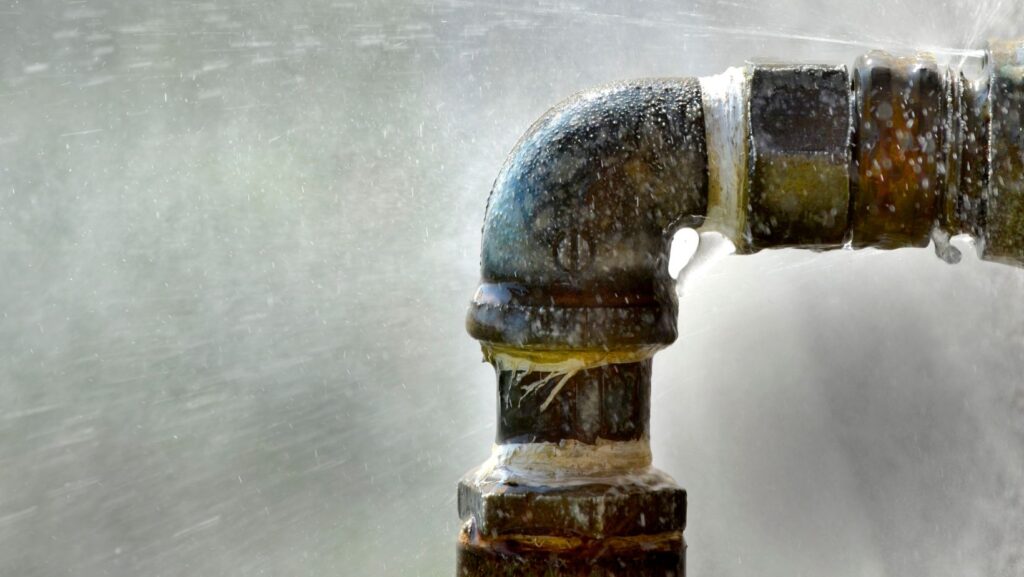One of the most salient pieces of evidence that you might be having a leaky pipe is an unexpectedly high water bill. If you are using water no longer than usual, then suddenly the bill surges; this can be evidence that somewhere in your plumbing system, water is leaking. Even little, slow leaks waste quite a lot of water over time, adding up rather quickly to your monthly bill. It’s a good idea to monitor your water usage and compare it with past bills to find these ‘hidden’ leaks early to avoid major damage or more expensive repairs.
Table of Contents
ToggleVisible Water Stains and Discoloration
Water discoloration or stains that could appear on your wall, ceiling, or floor are another clear evidence of a possible leak behind your walls. The stains are brownish or yellowish patches that could grow over a period as the leak worsens. You may also notice bubbling or peeling paint as moisture seeps through the drywall. On seeing any of these signs, it is very important to act immediately to ensure that the least damage takes place by water inside your structure. If you suspect that you have water damage from a leak visible in a number of ways, calling a plumber right away will go a long way in stopping the leak and preventing more costly repairs in the future.
Growth of Mold and Mildew
The growth of mold and mildew over and over again is another well-known indication of hidden leaks. Mold loves to grow in moist areas, and a small leak would be enough to provide it with all the water it needs.

If you smell something or see mold growing on surfaces that are normally dry, like walls, floors, or ceilings, this might be a sign of a pipe leak. Worse still, mold growth could lead to some health issues for you and your family members. The faster you address the situation, the better. Remediation of the source of the leak, coupled with adequate drying of the areas affected, will eliminate conditions that facilitate mold growth.
Reduced Water Pressure
When the water pressure becomes lower than what you are accustomed to, it may be an indication that your plumbing system is leaking somewhere. When a pipe leaks, less water will reach your faucets and showerheads, which diminishes the water pressure. This may, at times, be due to the build-up of debris or mineral deposits, but leaks are often the culprit. In cases where the loss of water pressure is sudden or only affects certain parts of your house, it will be necessary that you determine the cause. A professional plumber will diagnose the problem and confirm whether or not there is a hidden leak that is responsible for the drop in pressure.
Strange Noises of Running Water
Another probable cause of a leak would be the sound of running or trickling water, even when all your faucets are turned off. Sometimes, these sounds may indicate that at some point in your home, water is escaping from a pipe, even when you don’t see any visible signs of damage. This can sometimes be due to a leak under the floor, behind a wall, or some other usually inaccessible area. Paying attention to such strange noises and tracing their source may help in finding a leak well before it has grown into an ominous problem. If you are not able to trace any leak yourself, then a pro plumber can find its source with special equipment.
Water Pooling in Unusual Places
Another obvious sign of the leaky pipe is that water is pooling in places where it shouldn’t. Other times, you may notice puddles of water around sinks, toilets, and other fixtures for no apparent reason; this may mean water leaks from a pipe.

Check your basement or crawl spaces for dampness or standing water; it is easy for leaks to go undetected there for quite a while. That will help your flooring, foundation, and other parts of the infrastructure of your home remain free from water damage by attacking the problem right at its bud.
Higher Levels of Humidity within Your Home
Unexplained humidity in your home can also be a symptom of a plumbing leak. If you find rooms that are showing damp or muggy feelings or, at the very least, showing excessive moisture in the air, it may just be a leaking pipe releasing water vapor into the space. This will, over time, only continue to raise the humidity level favorable to mold growth and wood rot, along with other structural problems. A dehumidifier will make for a good temporary solution in helping to control moisture issues, but finding and stopping the leak is necessary in order to avoid long-term degradation. Note that condensation on your windows or a generally damp feeling in your home is usually indicative of increased interior humidity due to leaks.
Being alert to these essential warnings of leaky pipes can help homeowners avoid a possible problem by capturing it in its earliest stage. That could be due to the rise in your water bill, visible discolorations of watermarks, or even unusual noises of running water; fixing leaks quickly will save both your time and money. Sometimes, it is better to call a plumber, as some issues need diagnosis and the proper repair to ensure the health of your plumbing system for many years to come.





